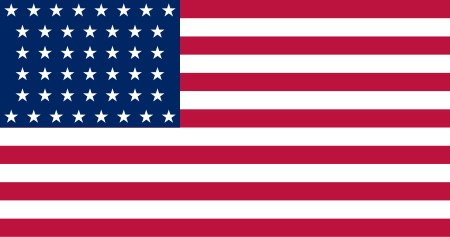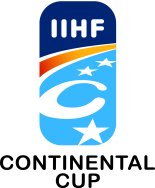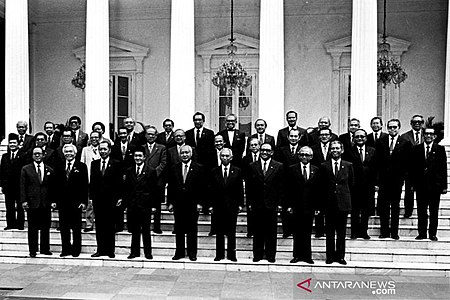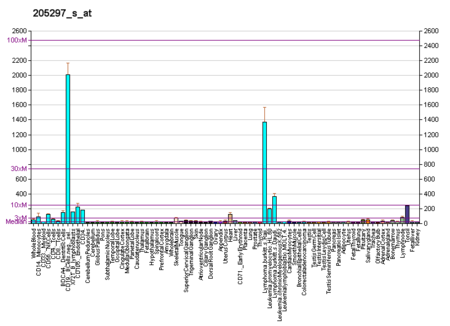Courland
| |||||||||||||||||||||||||||||||||||||||||||||||||||||||||||||||||||||||||||||||||||||||||||||||||
Read other articles:

يفتقر محتوى هذه المقالة إلى الاستشهاد بمصادر. فضلاً، ساهم في تطوير هذه المقالة من خلال إضافة مصادر موثوق بها. أي معلومات غير موثقة يمكن التشكيك بها وإزالتها. (مارس 2016) This list divides the world using the seven-continent model, with islands grouped into adjacent continents. The continents are: إفريقيا آسيا أوروبا أمريكا الشمالية أ�…

List of events ← 1893 1892 1891 1894 in the United States → 1895 1896 1897 Decades: 1870s 1880s 1890s 1900s 1910s See also: History of the United States (1865–1918) Timeline of United States history (1860–1899) List of years in the United States 1894 in the United States1894 in U.S. states States Alabama Arkansas California Colorado Connecticut Delaware Florida Georgia Idaho Illinois Indiana Iowa Kansas Kentucky Louisiana Maine Maryland Massachusetts Michigan Minnesota Mississipp…

European ice hockey tournament IIHF Continental CupMost recent season or competition:2023–24 IIHF Continental CupFormerlyIIHF European CupSportIce hockeyFounded1997FounderIIHFMost recentchampion(s) Nomad Astana (1st title)Most titles Yunost Minsk (3)QualificationChampions Hockey LeagueOfficial websiteiihf.com The Continental Cup is a second-level ice hockey tournament for European clubs (behind Champions Hockey League), begun in 1997 after the discontinuing of the European Cup. It was intended…

Ethical standards for U.S. television programs Seal of Good Practice Seal of Good Practice as it appeared in 1958 The Code of Practices for Television Broadcasters, also known as the Television Code, was a set of ethical standards adopted by the National Association of Broadcasters (NAB) of the United States for television programming from 1952 to 1983. The code was created to self-regulate the industry in hopes of avoiding a proposed government Advisory Board[1] and satisfying parental …

Kabinet Pembangunan IIIKabinet Pemerintahan IndonesiaDibentuk31 Maret 1978Diselesaikan16 Maret 1983Struktur pemerintahanKepala negaraSoehartoKepala pemerintahanSoehartoWakil kepala pemerintahanAdam MalikJumlah menteri24Jumlah wakil menteri6Partai anggotaGolongan KaryaAngkatan Bersenjata Republik IndonesiaIndependenSejarahPendahuluKabinet Pembangunan IIPenggantiKabinet Pembangunan IV Artikel ini adalah bagian dari seriPolitik dan ketatanegaraanIndonesia Pemerintahan pusat Hukum Pancasila(ideologi…

Bandar Udara Leh Kushok Bakula Rinpocheསྐུཤོག་བ་ཀུ་ལ་རིན་པོ་ཆེ་ཊར་མི་ནལ་གླེलेह कुशोक बकुला रिम्पोचे हवाई अड्डाBandar Udara Leh Kushok Bakula RinpocheIATA: IXLICAO: VILH IXLLokasi bandar udara di IndiaInformasiJenisMiliter/PublikMelayaniLehLokasiLeh, Jammu and Kashmir, IndiaKetinggian dpl3,256 mdplKoordinat34°08′09″N 077°32′47″E / …

Mammalian protein found in Homo sapiens CD79BAvailable structuresPDBOrtholog search: PDBe RCSB List of PDB id codes3KG5IdentifiersAliasesCD79B, AGM6, B29, IGB, CD79b molecule, IgbetaExternal IDsOMIM: 147245; MGI: 96431; HomoloGene: 521; GeneCards: CD79B; OMA:CD79B - orthologsGene location (Human)Chr.Chromosome 17 (human)[1]Band17q23.3Start63,928,740 bp[1]End63,932,336 bp[1]Gene location (Mouse)Chr.Chromosome 11 (mouse)[2]Band11 E1|11 68.89 cMStart106,202,167 …

Bilateral relationsArgentine-Indian relations Argentina India Diplomatic missionEmbassy of Argentina, New DelhiEmbassy of India, Buenos AiresEnvoyArgentine Ambassador to India Daniel ChuburuIndian Ambassador to Argentina Dinesh Bhatia Prime Minister Narendra Modi and President Alberto Fernández meeting in June 2022. Bilateral relations between the Argentine Republic and the Republic of India, have existed for decades. Argentina has an embassy in Delhi and a Consulate General in Mumbai whilst In…

French aircraft manufacturer A Caudron seaplane, being hoisted on board La Foudre in April 1914 The Société des Avions Caudron was a French aircraft company founded in 1909 as the Association Aéroplanes Caudron Frères by brothers Gaston and René Caudron. It was one of the earliest aircraft manufacturers in France and produced planes for the military in both World War I and World War II. From 1933 onwards, it was a subsidiary of Renault. Alphonse (Gaston) (1882–1915) and René Caudron (188…

Railway station in North Yorkshire, England HammertonGeneral informationLocationKirk Hammerton, Borough of HarrogateEnglandCoordinates53°59′47″N 1°17′03″W / 53.9963310°N 1.2840693°W / 53.9963310; -1.2840693Grid referenceSE470558Owned byNetwork RailManaged byNorthern TrainsPlatforms2Tracks2Other informationStation codeHMMClassificationDfT category F2HistoryOriginal companyEast and West Yorkshire Junction RailwayPre-groupingNorth Eastern RailwayPost-grouping Lon…

Former unincorporated community in Oregon, United StatesCopperfield, OregonFormer unincorporated communityCopperfield, 1907Copperfield, OregonShow map of OregonCopperfield, OregonShow map of the United StatesCoordinates: 44°58′22″N 116°51′27″W / 44.97278°N 116.85750°W / 44.97278; -116.85750CountryUnited StatesStateOregonCountyBakerElevation1,722 ft (525 m)Time zoneUTC−08:00 (Pacific (PST)) • Summer (DST)UTC−07:00 (PDT)Area code(s)458 …

American college football season 1915 Nebraska Cornhuskers footballNational champion (Billingsley)MVC championConferenceMissouri Valley ConferenceRecord8–0 (4–0 MVC)Head coachEwald O. Stiehm (5th season)Home stadiumNebraska FieldSeasons← 19141916 → 1915 Missouri Valley Conference football standings vte Conf Overall Team W L T W L T Nebraska $ 4 – 0 – 0 8 – 0 – 0 Kansas 3 – 1 – 0 6 – 2 –…

Wine from the U.S. state of Hawaii HawaiiWine regionMap of the major islands of the State Of Hawai'iOfficial nameState of HawaiiTypeU.S. stateYear established1959CountryUnited StatesSoil conditionsmostly volcanicTotal area10,931 square miles (28,311 km2)No. of vineyards2[1]Grapes producedSymphony[2]No. of wineries3[1] Hawaii wine refers to wine made in the U.S. state of Hawaii. The island of Maui is where the bulk of the state's wine is produced though there is some …

Sistem sekresi tipe IIIKompleks jarum pada sistem sekresi tipe IIIIdentifikasiSimbolT3SSTCDB1.B.22OPM superfamily348OPM protein5tcq Sistem sekresi tipe III atau tipe 3 (disingkat T3SS atau TTSS dalam bahasa Inggris) adalah suatu sistem sekresi yang terdapat dalam berbagai bakteri gram-negatif. Sistem ini digunakan untuk memasukkan protein dari bakteri tersebut ke dalam sel-sel eukariota, termasuk sel manusia, hewan dan tumbuhan.[1] Sistem ini adalah satu dari enam jenis sistem sekresi ya…

Salzburg 2023 State Elections 2023 Salzburg state election ← 2018 23 April 2023 Next → All 36 seats in the Landtag of Salzburg19 seats needed for a majorityTurnout274,521 (70.94%) 5.98% First party Second party Third party Leader Wilfried Haslauer Marlene Svazek David Egger-Kranzinger Party ÖVP FPÖ SPÖ Last election 15 seats, 37.8% 7 seats, 18.8% 8 seats, 20.0% Seats won 12 10 7 Seat change 3 3 1 Popular vote 81,752 69,310 48,099 Percent…

Politics of Mali Constitution Human rights Slavery Government Interim President Assimi Goïta Interim Prime Minister Choguel Kokalla Maïga Council of Ministers Parliament National Assembly Speaker: Vacant Administrative divisions Regions Cercles Arrondissements Communes Elections Recent elections Presidential: 20182024 Parliamentary: 2020next Political parties Foreign relations Ministry of Foreign Affairs Minister: Abdoulaye Diop Diplomatic missions of / in Mali Passport Visa requirements Visa …

2007 – MMVII17 år sedan MånadJan | Feb | Mar | Apr | Maj | JunJul | Aug | Sep | Okt | Nov | Dec År2004 | 2005 | 200620072008 | 2009 | 2010 Årtionde1980-talet | 1990-talet 2000-talet2010-talet | 2020-talet Århundrade1900-talet 2000-talet2100-talet Årtusende2000-talet Året Födda | AvlidnaBildanden | Upplösningar Humaniora oc…

Men's association football team For the women's team, see Turkey women's national football team. TurkeyNickname(s)Ay-Yıldızlılar(The Crescent-Stars)[1]Bizim Çocuklar(Our Boys)AssociationTurkish Football Federation (TFF)ConfederationUEFA (Europe)Head coachVincenzo MontellaCaptainHakan ÇalhanoğluMost capsRüştü Reçber (120)Top scorerHakan Şükür (51)Home stadiumVariousFIFA codeTUR[2] First colours Second colours FIFA rankingCurrent 42 2 (20 June 2024)[3]Highest5 …

English founder of arts society and academy This article is about William Shipley. For other uses, see William Shipley (disambiguation). William Shipley by Richard Cosway. Engraved portrait of William Shipley (William Hincks, late 18c.). William Shipley FRSA (baptised: 2 June 1715 – 28 December 1803) was an English drawing master, social reformer and inventor who, in 1754, founded an arts society in London that became The Royal Society of Arts, or Royal Society for the Encouragement of Arts, M…

مفاوضات الحوار الوطني الموريتاني التفاوض هو حوار يهدف إلى فض النزاعات، والتوصل إلى اتفاق على مسارات العمل، للمساومة من أجل ميزة فردية أو جماعية، أو لصياغة النتائج التي ترضي مختلف المصالح.[1][2][3] وهذه هي الوسيلة الرئيسية لتسوية المنازعات البديلة. يحدث التفاوض في …











